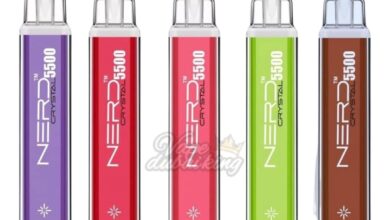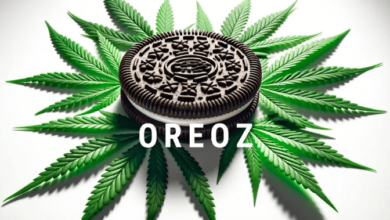
CBD oil can be taken orally, applied topically, or smoked. Oral ingestion is the most popular way to take CBD oil. When taken orally, the CBD oil is absorbed through the digestive system and enters the bloodstream. From there, it travels throughout the body, interacting with cannabinoid receptors located in various organs and tissues. Topical application is another common delivery method. CBD oil can be applied directly to the skin, where it is absorbed and enters the bloodstream. This method is especially beneficial for treating skin conditions and chronic pain. Smoking CBD oil is another option. When smoked, the CBD is absorbed through the lungs and enters the bloodstream. This delivery method is fast-acting and provides instantaneous relief. However, smoking CBD oil can also be harmful to the lungs.
1) Introduction
CBD, or cannabidiol, is a compound found in cannabis and hemp. THC, or tetrahydrocannabinol, is another compound found in cannabis, and the two are often confused because they both come from the same plant. However, CBD does not produce the “high” often associated with THC. Instead, CBD has been found to have a variety of potential health benefits, including reducing anxiety, relieving pain, and improving sleep.
There are a variety of ways to take CBD, including oils, capsules, edibles, and topicals. The delivery method you choose will likely depend on your preferences and needs. For example, if you’re looking for quick relief from anxiety, you may want to try an oil or vape pen. If you’re looking for long-lasting relief from pain, you may want to try a topical.
No matter which delivery method you choose, it’s important to start with a low dose and increase gradually as needed. This will help you find the right dose for you and minimize the risk of any side effects.
If you’re interested in trying CBD, talk to your doctor first. They can help you understand the potential risks and benefits and determine if it’s right for you.
2) Different types of CBD delivery methods
There are many different ways to take CBD, and the delivery method you choose can have a big impact on how effective it is. Here, we compare two of the most popular methods – CBD oil and CBD capsules.
CBD oil is the most popular way to take CBD, and it’s also the most versatile. You can take it sublingually (under the tongue), add it to food or drinks, or use it topically. CBD oil is absorbed quickly and starts working within minutes.
CBD capsules are a convenient and easy way to take CBD. They’re also very discreet, as most people won’t even know you’re taking them. Capsules are slowly absorbed into the body and can take up to an hour to start working.
So, which is the best delivery method for you? It really depends on your individual needs and preferences. If you want a fast-acting product that you can take anywhere, then CBD oil is a good choice. If you prefer a discreet product that you can take with you on the go, then CBD capsules may be a better option.
3) The advantages and disadvantages of each CBD delivery method
CBD oil is a popular natural remedy for many common ailments. CBD is short for cannabidiol, and it is one of the many compounds found in the cannabis plant. Unlike its more famous compound, THC, CBD does not produce a high or intoxication. Instead, CBD seems to have a variety of potential health benefits.
There are several ways to take CBD oil, and each has its own advantages and disadvantages.
CBD Oil Tinctures
Tinctures are the most popular way to take CBD oil. They are easy to use and can be taken in a variety of ways. You can take them sublingually (under the tongue), or add them to food or drink. Tinctures are usually the most potent form of CBD oil, and they are absorbed quickly.
The main advantage of tinctures is that they are easy to use. They are also one of the most discreet ways to take CBD oil, as they can be taken without anyone knowing.
The main disadvantage of tinctures is that they can be expensive. They are also not as portable as some other forms of CBD oil, such as capsules or gummies.
CBD Oil Capsules
Capsules are another popular way to take CBD oil. They are similar to tinctures in that they are easy to use and can be taken in a variety of ways. However, capsules are pre-measured, so you know exactly how much CBD you are taking.
The main advantage of capsules is that they are easy to use and are more portable than tinctures. The main disadvantage of capsules is that they can be more expensive than some other forms of CBD oil.
CBD Oil Gummies
Gummies are a popular way to take CBD oil, especially for people who do not like the taste of CBD oil. They are also easy to use and can be taken in a variety of ways.
The main advantage of gummies is that they are easy to use. They are also more portable than tinctures and capsules. The main disadvantage of gummies is that they may not be as potent as some other forms of CBD oil.
4) The most effective CBD delivery method
There are four primary ways to take cannabidiol (CBD) oil. These include sublingual (under the tongue), topical (on the skin), oral (by mouth), and inhaled (via vaporization). Each method has different absorption rates, bioavailability, and ease of use.
Sublingual:
The sublingual method is the most common way to take CBD oil. This involves placing a few drops of oil under your tongue and holding it there for 60-90 seconds before swallowing. This allows the oil to be absorbed directly into the bloodstream through the sublingual artery. The bioavailability of this method is high, meaning that a large percentage of the CBD will be available for your body to use.
Topical:
Topical CBD oil is applied directly to the skin. It can be used to treat localized pain or to improve skin conditions such as acne. The oil is absorbed through the skin and enters the bloodstream, where it then has the same effects as if it were taken orally. The bioavailability of topical CBD is lower than other methods, but it is still effective.
Oral:
Oral CBD oil is taken by mouth in the form of capsules, gummies, or other edibles. It is then digested and metabolized by the liver before entering the bloodstream. The bioavailability of orally-administered CBD is lower than other methods, but it is still effective.
Inhaled:
Inhaled CBD oil is vaporized and then inhaled. This method allows the CBD to enter the lungs and be directly absorbed into the bloodstream. The bioavailability of inhaled CBD is high, making it one of the most effective methods.
5) Conclusion
There are many different ways to consume CBD, and each method has its own advantages and disadvantages. In this article, we will go over the five most popular methods of CBD delivery: oral, topical, sublingual, inhalation, and transdermal.
Oral CBD is the most popular method of delivery, as it is the simplest and most convenient. You can take CBD oil by mouth in the form of capsules, tinctures, or edibles. The main advantage of oral CBD is that it is easy to take and can be taken anywhere. The downside of oral CBD is that it takes longer to take effect, and the effects may not last as long as other methods.
Topical CBD is applied directly to the skin in the form of creams, lotions, or ointments. The main advantage of topical CBD is that it is fast-acting and can be used to target specific areas of the body. The downside of topical CBD is that it can be messy and difficult to apply, and it may not be as effective as other methods.
Sublingual CBD is taken under the tongue in the form of tinctures or sprays. The main advantage of sublingual CBD is that it is fast-acting and easy to take. The downside of sublingual CBD is that it can be difficult to measure the dose, and the effects may not last as long as other methods.
Inhalation CBD is taken in the form of vaporized liquids or CBD-infused e-liquids. The main advantage of inhalation CBD is that it is fast-acting and provides high bioavailability. The downside of inhalation CBD is that it is not as convenient as other methods, and it may not be as effective for some people.
Transdermal CBD is applied to the skin in the form of patches. The main advantage of transdermal CBD is that it is easy to use and provides long-lasting effects. The downside of transdermal CBD is that it can be difficult to find a product that works well for you, and it may not be as effective as other methods.




